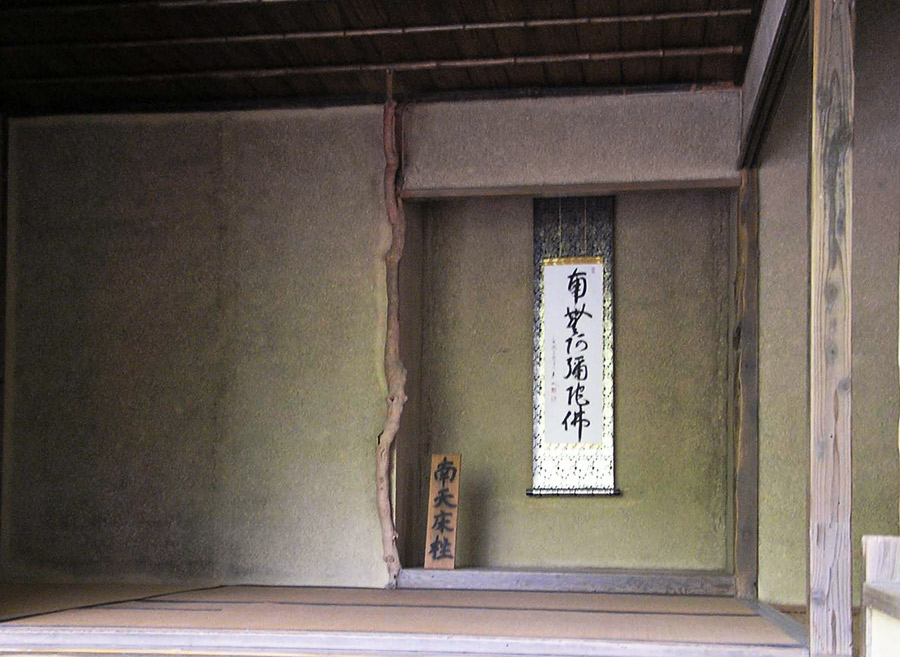|
||
 |
||
The pillar closest to the center of the tea ceremony room *chashitsu º, and the second of two pillars dictate the width of the alcove. As in formal shoin style *shoin-zukuri @¢ tea ceremony rooms, tokobashira are chamfered. They are made of cypress or rarer woods. In semi-formal rustic type tea ceremony rooms, pine, maple, mulberry, sandalwood and ebony are employed. In the simplest, most unpretentious style tea ceremony rooms, polished logs of Japanese cedar, chestnut, bamboo and other unusual kinds of timber are used. The diary MATSUO NIKKI ¼öúL (mid-19c), states that the alcove post which retained the bark was first used by Furuta Oribe ÃcD (1544-1615). Even material from old historical buildings was sometimes used. Since the alcove pillar is an important part of the interior design, in *sukiya ï® style tea houses it occasionally bears the marks of having been scraped by an adze to give it a rough finish. Chamfered posts were used to produce a dignified appearance in *shoin @ rooms. There are many extant examples of alcove pillars in tea ceremony rooms dating from the late 16c-early 17c that were made of chestnut wood with an adze finish.

Roku'onji
Sekkatei [Àà (Kyoto)
@
(C)2001 Japanese Architecture and Art Net Users System.@No reproduction or republication without written permission.
fÚÌeLXgEÊ^ECXgÈÇASÄÌRec̳f¡»E]ÚðֶܷB

